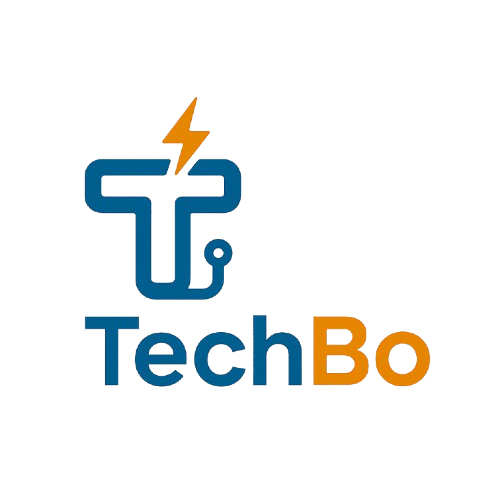In today’s fast-paced and interconnected business landscape, organizations must streamline operations, enhance collaboration, and make data-driven decisions to stay competitive. Enterprise Resource Planning software has emerged as a cornerstone technology to achieve these goals. By integrating core business processes into a unified system, ERP solutions empower companies to optimize efficiency, reduce costs, and scale effectively. This article explores ERP software in depth, including its features, benefits, types, challenges, and future trends.

What is ERP Software?
ERP software is a suite of integrated applications designed to manage and automate key business functions such as finance, human resources, supply chain, manufacturing, customer relationship management (CRM), and more. At its core, ERP eliminates data silos by connecting departments through a centralized database, enabling real-time information sharing and collaboration.
The concept of ERP originated in the 1960s with Material Requirements Planning (MRP) systems for manufacturing. Over decades, it evolved into ERP, expanding beyond production to encompass all aspects of enterprise operations. Modern ERP systems are cloud-based, AI-driven, and accessible via mobile devices, reflecting the digital transformation of businesses.
Key Features of Softwre Systems
- Modular Architecture:
software systems are built as modular platforms, allowing businesses to select functionalities tailored to their needs. Common modules include:
- Finance & Accounting: General ledger, accounts payable/receivable, budgeting.
- Human Capital Management (HCM): Payroll, recruitment, performance tracking.
- Supply Chain Management (SCM): Inventory, procurement, logistics.
- Manufacturing: Production planning, quality control, shop floor management.
- CRM: Sales automation, customer support, marketing.
- Real-Time Data Integration:
software consolidates data from disparate departments into a single source of truth. For example, sales orders automatically update inventory levels, triggering procurement workflows if stock runs low. - Automation:
Repetitive tasks like invoice generation, purchase order approvals, and employee onboarding are automated, minimizing errors and freeing staff for strategic work. - Analytics & Reporting:
Built-in dashboards and AI-powered tools provide actionable insights, such as demand forecasting or financial performance trends. - Regulatory Compliance:
software help businesses adhere to standards like GDPR, HIPAA, or SOX by automating audits, tax calculations, and documentation.
Benefits of Software
- Operational Efficiency:
By eliminating redundant processes and manual data entry, software systems reduce cycle times and improve productivity. For instance, a manufacturer might cut production lead times by 30% using real-time inventory tracking. - Cost Savings:
Centralized data reduces IT costs, while optimized inventory levels and resource allocation lower operational expenses. A study by Nucleus Research found ERP users achieve an average ROI of 250%. - Enhanced Decision-Making:
Executives gain visibility into KPIs across departments, enabling faster, data-backed decisions. For example, a retailer can analyze sales trends to adjust pricing strategies dynamically. - Scalability:
Cloud-based Software systems allow businesses to add users, modules, or storage as they grow, without heavy upfront investments. - Improved Customer Experience:
Integrated CRM modules enable personalized interactions, faster response times, and accurate order fulfillment, boosting customer satisfaction.
Types of Software Systems
- On-Premise ERP:
Installed locally on company servers, this model offers full control over data and customization but requires significant IT infrastructure and maintenance. - Cloud-Based ERP:
Hosted on vendor servers and accessed via the internet, cloud ERP (e.g., SAP S/4HANA Cloud) offers lower costs, automatic updates, and remote accessibility. - Hybrid Software
Combines on-premise and cloud solutions, ideal for businesses transitioning to the cloud or needing to keep sensitive data on-site. - Industry-Specific Software
Tailored for sectors like healthcare, construction, or retail, these systems include specialized tools such as EHR integration or project costing. - Open-Source Software
Platforms like Odoo provide customizable, cost-effective solutions for tech-savvy organizations.
Implementation Challenges
Despite its advantages, ERP adoption can be complex:
- High Costs: Licensing, customization, and training may strain budgets, especially for SMEs.
- Resistance to Change: Employees may reject new workflows without proper change management.
- Data Migration: Transferring legacy data risks errors if not meticulously planned.
- Integration Issues: Compatibility with existing tools (e.g., CRM) requires careful API mapping.
Successful implementation hinges on clear objectives, stakeholder buy-in, and partnering with experienced vendors.
Industry-Specific Solutions
Different sectors have unique needs:
- Manufacturing: Focus on production scheduling, quality control, and IoT-enabled machinery.
- Healthcare: Compliance with HIPAA, patient record management, and billing.
- Retail: Omnichannel sales, inventory optimization, and POS integration.
- Construction: Project management, subcontractor coordination, and cost estimation.
Vendors like Infor, Epicor, and NetSuite offer niche solutions for these verticals.
Future Trends in Software
- AI & Machine Learning:
Predictive analytics, chatbots for customer service, and intelligent automation will deepen Software capabilities. - IoT Integration:
Sensors in machinery or vehicles will feed real-time data into ERPs for predictive maintenance and supply chain visibility. - Mobile ERP:
Mobile-first interfaces empower remote workers to approve workflows or access reports on-the-go. - Sustainability:
ERPs will incorporate carbon footprint tracking and circular economy practices to support ESG goals. - Low-Code/No-Code Platforms:
Users with minimal coding skills will customize ERPs via drag-and-drop interfaces.
Conclusion
Software is no longer a luxury but a necessity for businesses aiming to thrive in a data-driven world. By unifying processes, enhancing transparency, and leveraging emerging technologies, software systems enable organizations to adapt to market shifts, meet customer expectations, and drive sustainable growth. While implementation requires careful planning, the long-term benefits—cost savings, agility, and innovation—make Software a strategic investment for enterprises of all sizes and industries. As technology evolves, Software will continue to shape the future of work, redefining how businesses operate and compete.

